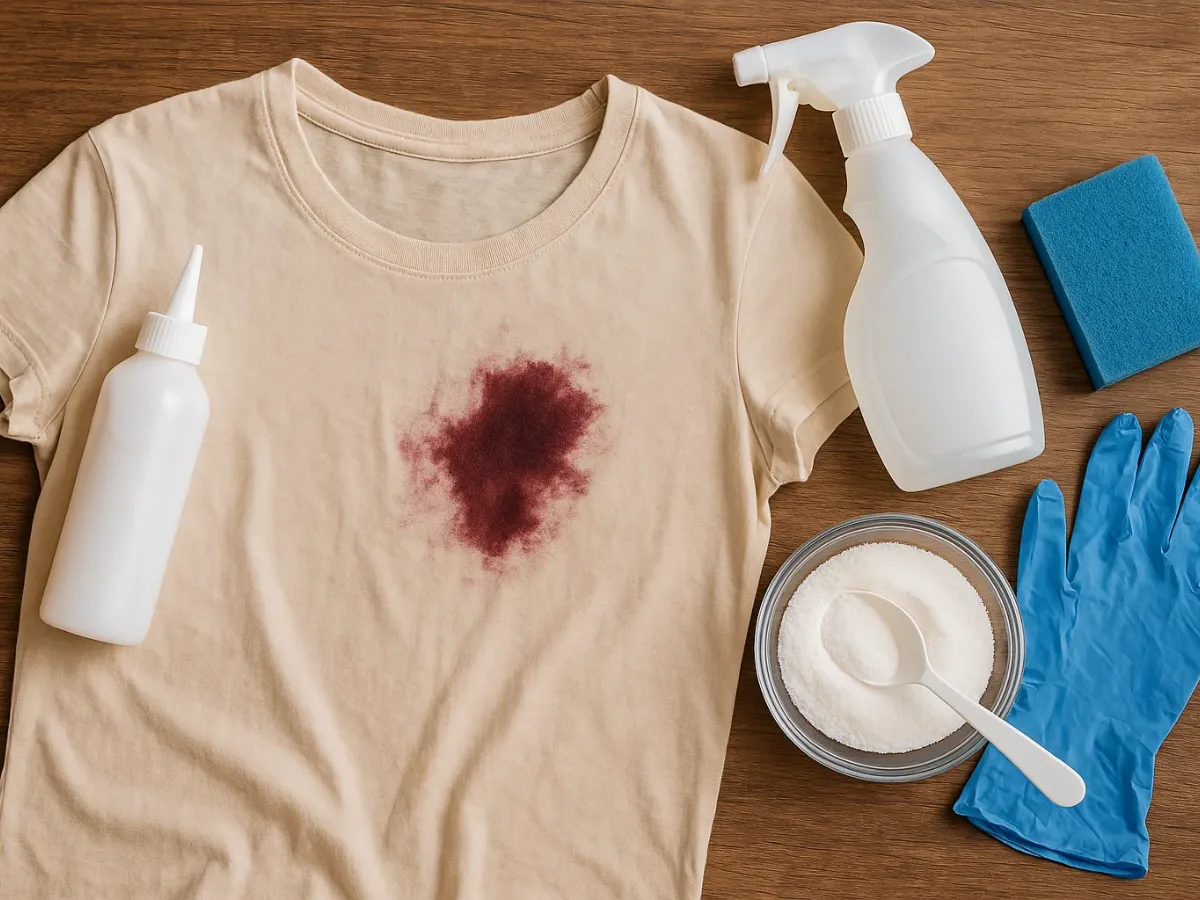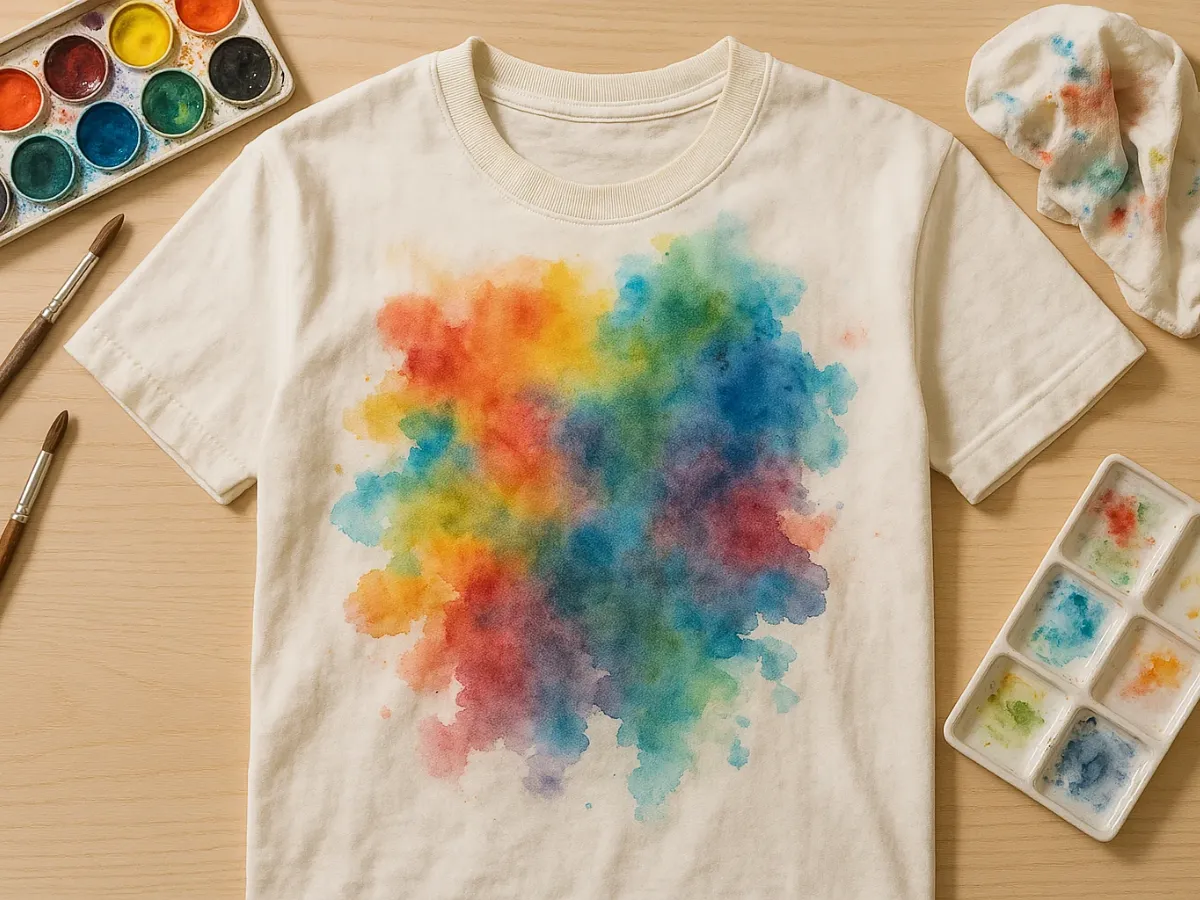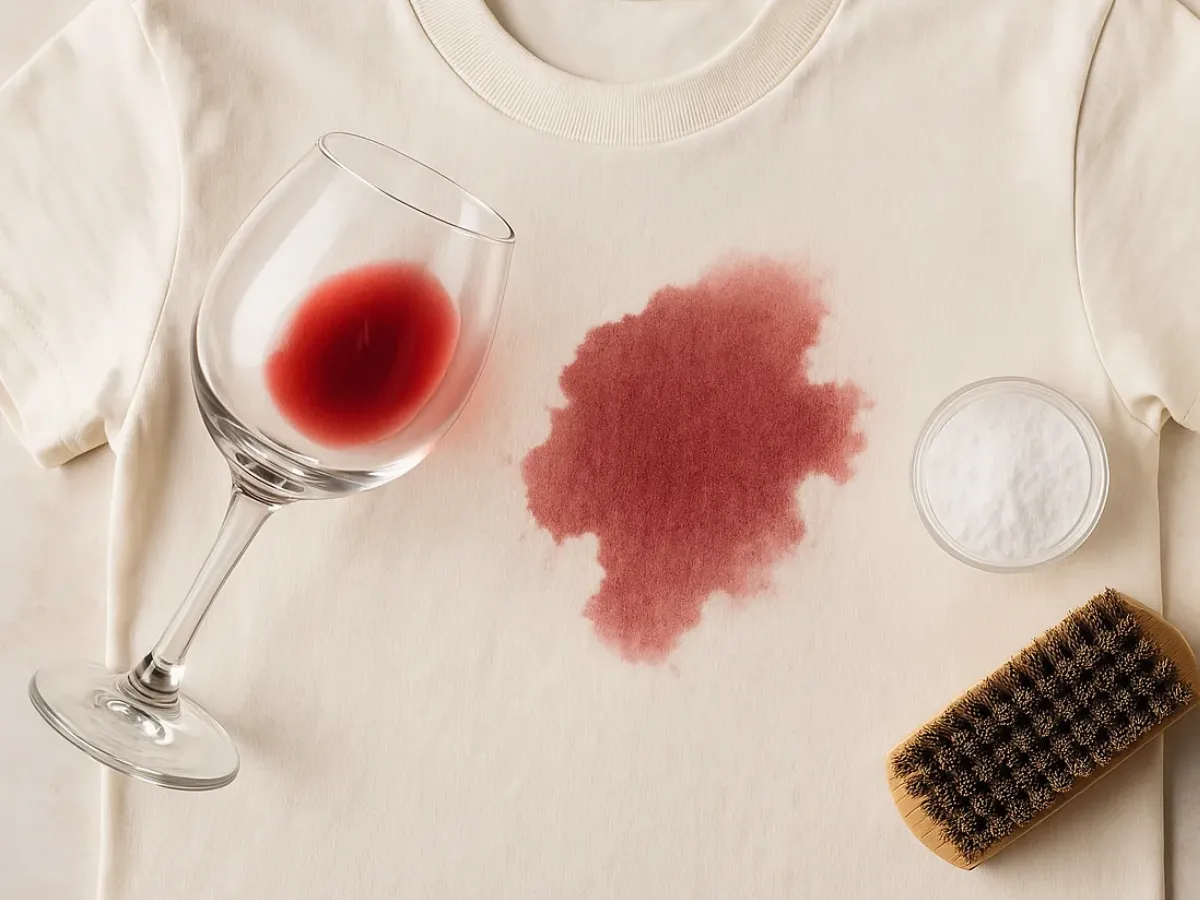Paint Stain on Clothes! Complete Guide to Removing It (Based on Type)

Whether you're renovating a wall, enjoying an afternoon of crafts, or just had an accidental brush, paint stains on clothes are a frustrating accident and often seem like a death sentence for the affected garment. From kids' tempera paint to synthetic enamel or acrylic paint, each type presents a different challenge. But do you really have to get rid of that shirt or pair of pants? Not so fast! Learning how to remove paint stains from clothes is possible if you know the type of paint and apply the correct method.
In this detailed guide, we'll walk you through the essential steps and specific solutions for removing water-based, acrylic, and oil-based paint stains, both fresh and dried, while minimizing damage to your garments.
The Crucial First Step: Identify the Paint Type
Before applying any product, it's vital to know what you're dealing with. The paint's composition determines the cleaning method:
- Water-Based Paints: The most common in school crafts and some interior wall paints. They include:
- Tempera and Watercolor: The easiest to remove, especially when fresh.
- Plastic or Latex Paint (Wall Paint): Cleans up with water while wet. More complicated once dry.
For watercolors, we have a specific guide: how to remove watercolor stains.
- Acrylic Paints: Widely used in crafts, fine arts, and some decorative applications. They are water-based while wet, but form a water-resistant plastic film upon drying.
- Oil-Based Paints: Include synthetic enamels (like Rust-Oleum and similar brands), varnishes, artist oil paints. These are the most difficult to remove because they repel water and require specific solvents.
How to tell which type? If possible, check the paint can. If not, consider the smell (oil-based usually smell strongly of solvents) or how it cleans off tools (water for water-based/acrylics, mineral spirits/solvent for oil-based).

Universal Golden Rules (Don't Skip These!)
Regardless of the paint type:
- ACT FAST!: A fresh stain is infinitely easier to remove than a dried one.
- SCRAPE, DON'T RUB (if solid): If there's a blob of dried or semi-dried paint, use a spoon or dull knife to CAREFULLY lift the solid excess.
- BLOT, DON'T RUB (if wet): If it's liquid, gently press with a clean cloth or paper towel to remove excess WITHOUT SPREADING IT.
- PROTECT THE BACK: Place cardboard or plenty of paper towels under the stain to prevent it from bleeding through.
- TEST FIRST: Any chemical product (alcohol, solvent, stain remover), test it on a hidden area of the garment first.
- AVOID HEAT: Don't use hot water initially and NEVER dry the garment in a dryer or iron it until you are 100% sure the stain is gone. Heat sets paint.
- READ THE GARMENT LABEL: Check if the fabric is delicate (silk, wool...) and what it can tolerate.
How to Remove Water-Based Paint (Tempera, Watercolor, Fresh Latex)
These are the friendliest. If you act quickly:
- Immediate Rinse from Behind: Place the stain under a tap of lukewarm or cold water (per label, but avoid very hot). Let water run from the inside out to push the paint away.
- Apply Liquid Detergent: Pour liquid laundry detergent or even dish soap (good for latex) directly onto the stain.
- Rub Gently: Massage the detergent with fingers or a soft toothbrush.
- Rinse Well: Rinse with lukewarm/cold water.
- Wash Normally: If the stain is gone or very faint, wash the garment as usual in the washing machine, preferably with cold or lukewarm water.
- Check Before Drying: Mandatory final inspection!
If latex paint has started to dry, it can be tougher. Try scraping and applying detergent, letting it sit longer, or try isopropyl alcohol (after testing).
How to Remove Acrylic Paint
Speed is even more crucial here, as it dries quickly into a plastic film.
If Acrylic Paint is WET:
- Follow the same steps as for fresh water-based paint: rinse quickly from behind with cold/lukewarm water, apply detergent, rub gently, and rinse. You must be very fast.
- Wash immediately in the washing machine with cold water.
If Acrylic Paint is DRY:
This is a tricky scenario. The paint has formed a plastic layer bonded to the fabric.
- Scrape Thoroughly: Try to remove as much of the surface layer as possible with a spoon, spatula, or dull knife. Be careful not to damage the fabric.
- Try to Soften/Dissolve: You'll need a stronger agent here. Options (ALWAYS TEST ON HIDDEN AREA FIRST!):
- Isopropyl Alcohol (Rubbing Alcohol): Soak a cotton ball or cloth, place it on the stain (with protection underneath), and let it sit for a few minutes to soften. Then try gently rubbing with a brush or scraping again.
- Diluted Ammonia: A mixture of equal parts ammonia and water (wear gloves, ventilate) might help. Apply, let sit, rub gently.
- Window Cleaner (with Ammonia): Sometimes works due to the ammonia content. Spray, let sit, rub.
- Acetone / Nail Polish Remover (Last Resort, Extreme Caution!): Acetone dissolves acrylic but can also dissolve synthetic fibers (acetate, triacetate) and damage colors. Use only as a last resort on sturdy natural fabrics (cotton, linen) and whites, testing thoroughly first. Apply with a cotton ball by dabbing, never pour directly. More info in how to remove nail polish.
- Specific Products: Cleaners designed for dried acrylic paint exist, though often for hard surfaces. Read carefully if suitable for textiles.
- Wash Garment: After treatment, wash in the machine with cold or lukewarm water.
- Repeat if Necessary: You will likely need to repeat the process.
How to Remove Oil-Based Paint or Enamel
These are the toughest. Water is useless. You need specific solvents.
- Identify the Correct Solvent: Look at the paint can. It will usually indicate cleanup with mineral spirits (turpentine / white spirit) or a specific universal or enamel thinner. If you don't have the can, mineral spirits are the most common option for oil paints.
- Ventilation and Protection!: Work in a very well-ventilated area, away from flames. Wear gloves if possible.
- Protect the Back: Place a thick layer of paper towels or an old absorbent rag under the stain.
- Apply Solvent (AFTER TESTING!): Moisten a clean white cloth with the chosen solvent (mineral spirits, etc.). Dab gently onto the stain from the REVERSE side of the fabric, pushing the paint into the absorbent cloth below.
- Change Cloths: Change both the application cloth and the absorbent cloth underneath frequently as they get stained.
- Continue Until Removed: Keep dabbing until you no longer transfer paint. Do not rub hard.
- Treat Greasy Residue: Once the paint is gone, an oily residue from the solvent and paint will remain. Apply liquid detergent (dish soap is good) directly to this area and rub gently.
- Wash Immediately: Wash the garment alone in the machine with the hottest water the label allows and your regular detergent. You might need two cycles.
- Final Airing: Air dry to ensure the solvent smell dissipates completely.
If the stain persists, professional cleaning may be the only solution.
Does Vinegar Work for Removing Paint Stains?
Vinegar is sometimes mentioned as a home remedy. However, its effectiveness is very limited for most paints, especially dried or oil-based ones. Being acidic, it might SLIGHTLY help break down a VERY FRESH water-based paint stain (like tempera), if applied diluted, allowed to sit, and gently rubbed before washing. It is not a reliable solution for general paint removal.
Frequently Asked Questions about Paint Stains
How can I remove dried paint stains from clothes?
Scrape, then use an appropriate solvent (alcohol for acrylic, mineral spirits for oil, always testing first) applied by dabbing. Wash afterward.
How can I remove paint stains from clothes?
Identify the paint type. Act fast. Use water and detergent for fresh water-based. Alcohol or specific solvents for acrylic or oil, always with caution and testing.
How to remove paint from clothes with vinegar?
Vinegar is largely ineffective. It might minimally help on very fresh tempera stains, but not recommended as a general solution.
What type of paint does not come off clothes?
The most difficult or impossible once dried are oil-based paints (enamels, oils) and some heavy-duty or epoxy acrylics.
Removing paint stains requires identifying the paint type and acting quickly with the right method. While water-based paints are relatively easy to treat when fresh, dried acrylics and oil-based paints pose a greater challenge that may require solvents and patience. Remember always to test products on a hidden area and avoid heat!
Final Wash After Stain Removal? Come to LaColada!
After treating a paint stain, it's crucial to wash the garment thoroughly to remove product residues and ensure complete cleanliness. At LaColada Self-Service Laundry Ponferrada, our machines offer efficient cycles and professional detergents to give your clothes that perfect final wash. Ensure the best finish for your recovered garments at LaColada!
Finish the Job at LaColada Ponferrada!
Sebastián R.
More than 10 years at the helm of Lacolada Lavanderia Autoserivico Ponferrada and repairing industrial and domestic machinery in my spare time. You won't find unverified theories from the internet here, just real solutions tested by someone who gets their hands dirty every day.
More Guides for Tough Stains

How to Remove Hair Dye Stains from Clothes
Effective solutions to remove dye residue without damage.

Watercolor Stains on Clothes: How to Remove Them Easily
Step-by-step guide to remove water-based paint stains.

How to Remove Red Wine Stains (Fresh or Dried)
Effective methods to save your clothes from wine stains.